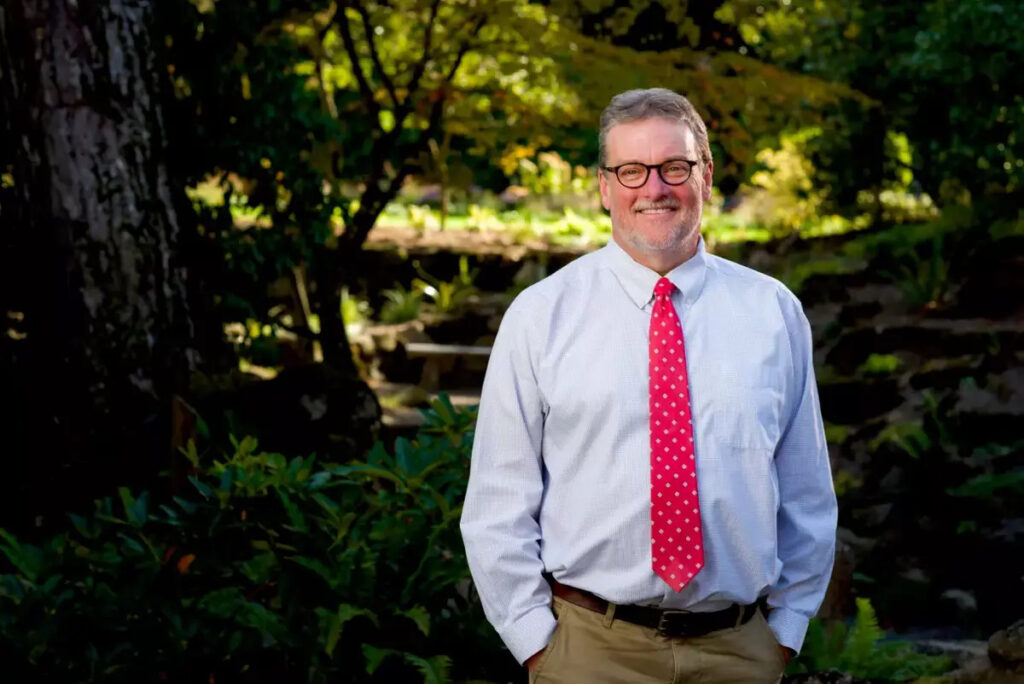
On Nov. 16, Associate Professor of History at Lewis & Clark Ben Westervelt gave a lecture over Zoom entitled “A Way Through Spanish History: What is Spain…and Where Is It Exactly?”
Westervelt began by introducing the concept of Spain, a seemingly innocuous country by most standards that does not seem geographically challenging to define.
However, his lecture explained that there are, in fact, numerous geographical oddities that comprise the area surrounding and containing Spain and its territories: Gibraltar, Portugal, the Spanish enclaves of Ceuta and Melilla in Morocco, the Balearic Islands, Andorra, the Canaries, the Basque Country (whose Basque name Euskul Herria comes from the ancient language spoken in Iberia before the Celts arrived), Catalonia and Navarre.
Westervelt then discussed the Camino de Santiago, a network of pilgrimage routes, one of which Westervelt will lead a group along in May 2024 as a part of the LC Travel program, which unlike Study Abroad is for parents, friends and alumni. The routes lead to the shrine of the Apostle James in the Cathedral of Santiago de Compostela in northwestern Spain.
“The path itself has always been an artery between France and Spain,” he said.
The Camino de Santiago Westervelt is the most popular, also known as the French Way. He explained that the various groups occupying Spain were largely isolated from the rest of Europe, such that even with a long history of trade, Spain was still largely rural.
“As far as we can tell, it looked a lot like what Gaul looked like, say, when Julius Caesar showed up there: ethnic tribal groups living side by side, quarreling sometimes, cooperating at other times,” Westervelt said.
The history of Spanish trade began when the Phoenicians strategically incorporated Spain into their commercial trading routes.
“They certainly were interested in exploiting the resources in, say, up the farther end of the Mediterranean,” Westervelt said.
Then, Westervelt added, the Phoenicians established the settlement of Carthage in North Africa.
“The Carthaginians, as I’m sure you know, settled down and stayed, and they had an imperial interest in Iberia,” Westervelt said.
The Carthaginians then systematically conquered and integrated Iberia into their empire. Westervelt likened Iberia to the Wild West for the Carthaginians.
“Iberia was where they thought the action was going to be,” Westervelt said.
Westervelt then described the Punic Wars, a series of conflicts between the Roman Republic and the Empire of Carthage, after which the Romans built aqueducts, bridges and roads throughout Iberia.
Once the Roman Empire fell, Iberia became the Kingdom of the Visigoths. When their kingdom was defeated, Iberia was united by Islam, which had emerged from Saudi Arabia as the Al-Andalus.
Westervelt said that the Christianization of Iberia was crucial to establishing Spain as the country we know today.
“The Reconquista, the effort by Christians in España, or Iberian Christians, and the Christians from the north as well, to reconquer, is the fuel to refire the crucible in which Spain gets made,” he said.
Then, the discovery of St. James in the northwest tip of Galicia created lasting historical consequences, two of which Westervelt focused on.
“It catalyzed a movement of crusaders who came down from France (before the Crusades) to assist in the reconquest,” Westervelt said of the first consequence. “The second consequence is the army of pilgrims who also began to come to Santiago.”
Westervelt continued, saying that 1492 was a pivotal year because it marked the fall of the kingdom of Granada and the year of the Alhambra Decree, which expelled Jews from Spain, an act that would play a crucial role in how the Spanish defined themselves.
Westervelt touched on influential marriages, such as between Petronilla of Aragon and the Count of Barcelona Raymond Berenguer IV in 1137 and between Ferdinand of Aragon and Isabella of Castile in 1469, ultimately concluding that dynastic marriages gave Spain connections across the globe to every significant global power except France.
Westervelt concluded his lecture by discussing the establishment of Spain as a linguistic-cultural touchstone within international culture. By the time Charles V abdicated the throne in 1556, the country had begun to be known as Spain in the English-speaking world. Finally, the country was recognized as a cohesive entity.
“It’s what foreigners called the commercial destination that they went to,” Westervelt said.
Westervelt’s lecture is available to watch on the LC website.
Subscribe to the Mossy Log Newsletter
Stay up to date with the goings-on at Lewis & Clark! Get the top stories or your favorite section delivered to your inbox whenever we release a new issue.

Leave a Reply